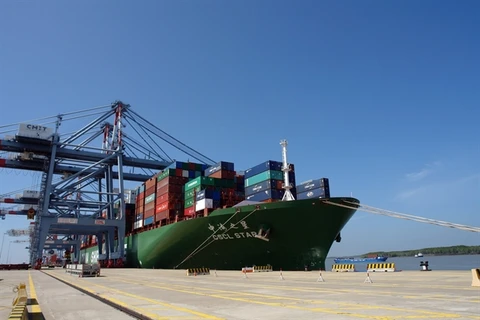Binh Dinh (VNS/VNA) - The People’s Committee of the south central province of Binh Dinh has proposed the Ministry of Transport and the Vietnam Maritime Administration withdraw two local ports from master planning for seaport development in 2021-2030.
De Gi and Tam Quan ports were proposed to be removed from the planning and instead developed into fishing ports while the lagoon areas would be developed into storm shelters for fishing vessels.
The provincial People’s Committee said for many years, De Gi and Tam Quang estuaries have had low levels of water and narrow channels only suitable for fishing vessels. Currently, no cargo is transported via these ports.
Removing these two ports out of the planning would not cause any problems as no investment projects were being carried out at the ports, the People’s Committee said.
Dang Dinh Dao, former Director of the Institute for Economics and Development Studies, said the proposal had set an example for other localities in making planning in the context that every coastal locality wanted seaports without paying adequate attention to the natural, social, economic or environmental conditions.
A lot of planning had proven to be unrealistic, Dao said, adding that it would be a big problem if every locality had an international seaport and did not pay attention to regional links or master planning.
He said Vietnam had more than 20 international seaports but none of them had received the investment to reach international standards.
He pointed out that there were a number of lessons. The planning of the wholesale market was an example. Many wholesale markets within planning were built but had not been put into operation due to problems attracting sellers and buyers.
Planning must be innovated, not only for seaports but also for other infrastructure developments, he said.
“It’s time localities closely work with central agencies to develop realistic planning which ensures consistency with other socio-economic planning," he said.
Vietnam is developing new master planning for seaports in 2021-2030 with a vision to 2050 to promote economic development.
There are 286 ports across the country with a total wharf length of 96km, more than 4.5 times longer than in 2000. The seaport system handled a total cargo volume of more than 692 million tonnes in 2020, 8.4 times higher than 2000./.
De Gi and Tam Quan ports were proposed to be removed from the planning and instead developed into fishing ports while the lagoon areas would be developed into storm shelters for fishing vessels.
The provincial People’s Committee said for many years, De Gi and Tam Quang estuaries have had low levels of water and narrow channels only suitable for fishing vessels. Currently, no cargo is transported via these ports.
Removing these two ports out of the planning would not cause any problems as no investment projects were being carried out at the ports, the People’s Committee said.
Dang Dinh Dao, former Director of the Institute for Economics and Development Studies, said the proposal had set an example for other localities in making planning in the context that every coastal locality wanted seaports without paying adequate attention to the natural, social, economic or environmental conditions.
A lot of planning had proven to be unrealistic, Dao said, adding that it would be a big problem if every locality had an international seaport and did not pay attention to regional links or master planning.
He said Vietnam had more than 20 international seaports but none of them had received the investment to reach international standards.
He pointed out that there were a number of lessons. The planning of the wholesale market was an example. Many wholesale markets within planning were built but had not been put into operation due to problems attracting sellers and buyers.
Planning must be innovated, not only for seaports but also for other infrastructure developments, he said.
“It’s time localities closely work with central agencies to develop realistic planning which ensures consistency with other socio-economic planning," he said.
Vietnam is developing new master planning for seaports in 2021-2030 with a vision to 2050 to promote economic development.
There are 286 ports across the country with a total wharf length of 96km, more than 4.5 times longer than in 2000. The seaport system handled a total cargo volume of more than 692 million tonnes in 2020, 8.4 times higher than 2000./.
VNA
























